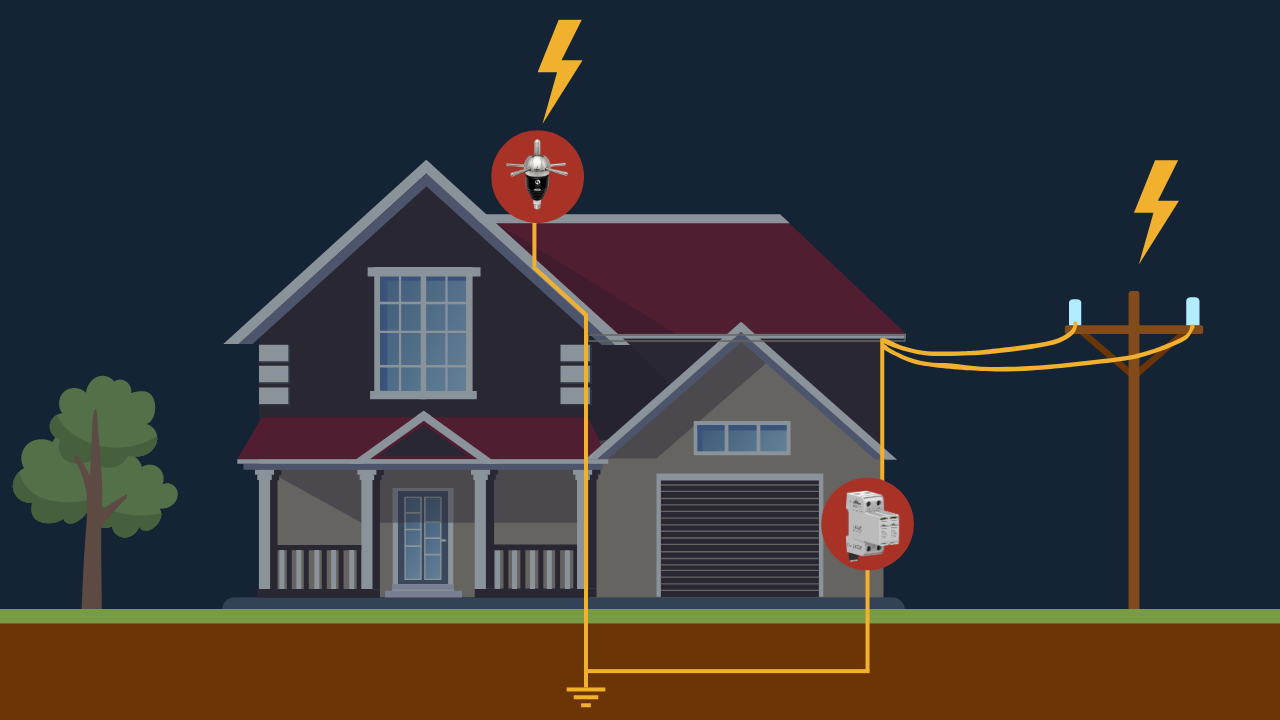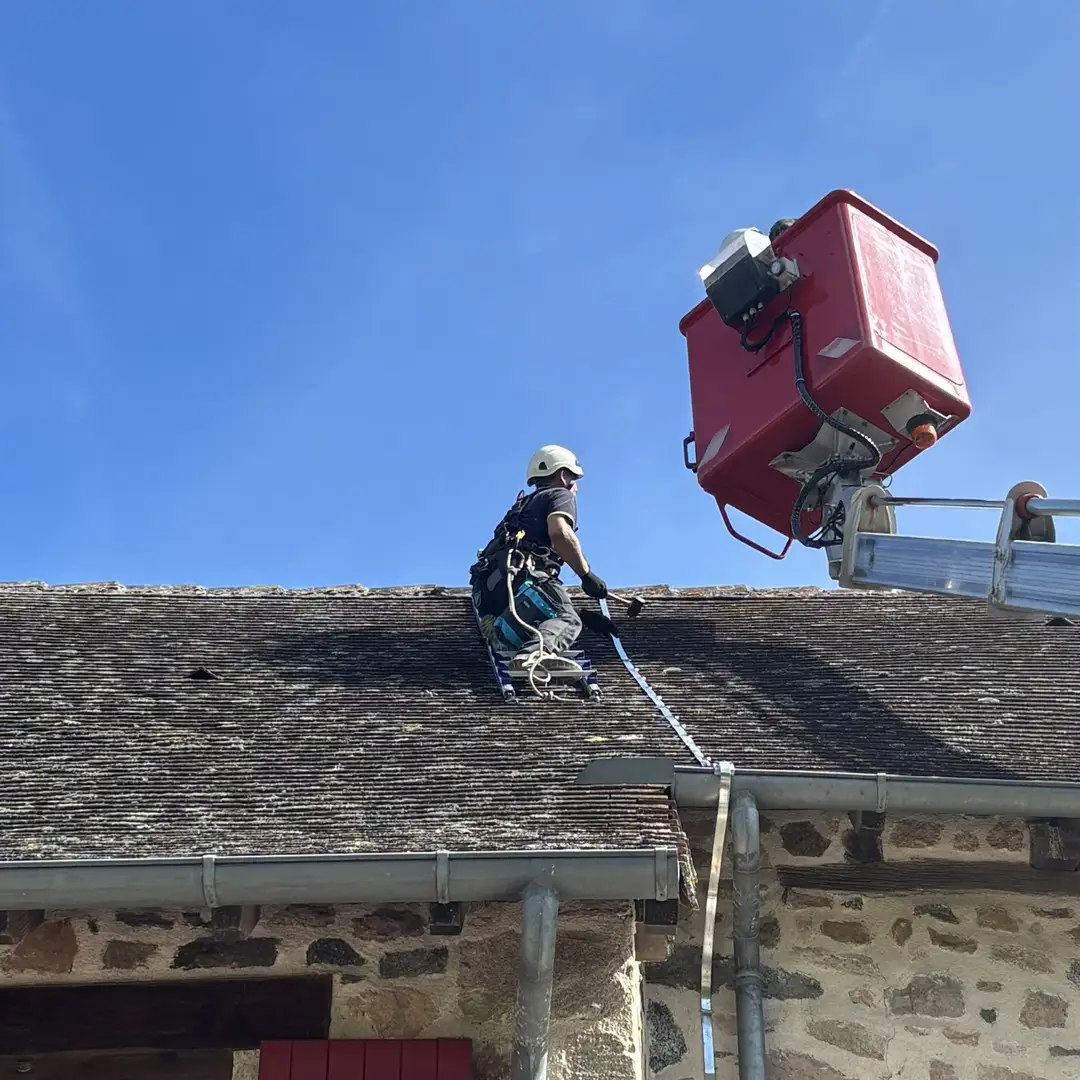Lightning rod & Surge arrester: What is the difference?
After reading this article, you will know the difference between lightning rod and surge arrester (or SPD), and why these two types of protection are essential to ensure the safety of property and people.
Thunderstorms are natural phenomena as spectacular as they are dangerous, and can cause significant material and human damage. To protect against them, and minimize the risks associated with the devastating effects of lightning, several technologies are available. Among them, two different devices are often confused (espacially in French, because both words are almost the same): lightning rod and surge arrester.
Contents:
The Lightning Rod: a shield against direct impacts
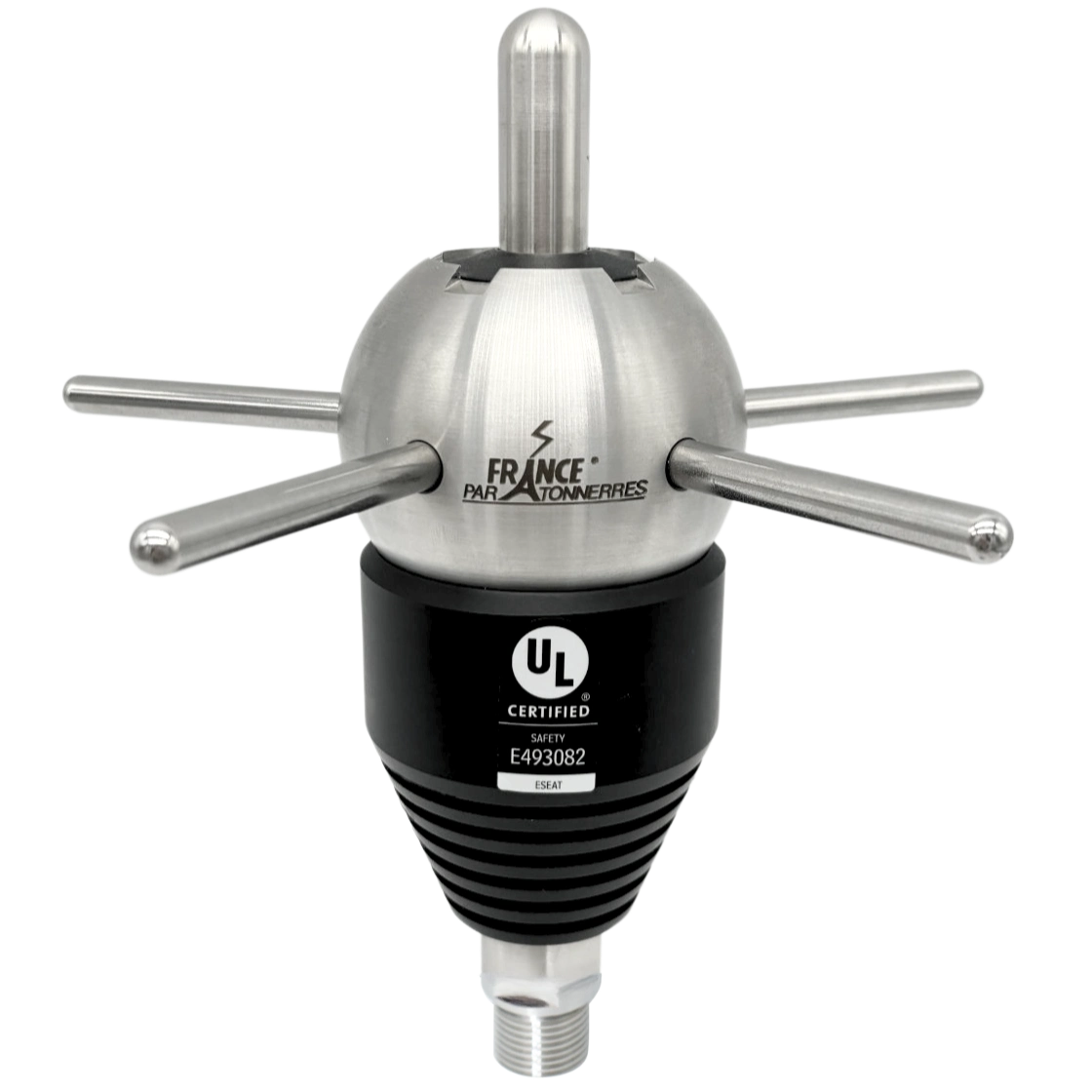
A lightning rod is an external lightning protection device (or direct protection), whose role is to capture lightning strikes in the desired zone. Several technologies exist (Early Streamer Emission air terminals, simple Franklin rods, meshed cage, tension wire, etc.), but the basic principle remains the same for all of them: the lightning conductor is a metal element connected to an earthing system by a conductive material.
It is often said that lightning conductors attract lightning, but this is not true. Installing a lightning rod on a house will not increase the number of lightning strikes. For a lightning rod to work and intercept lightning strikes, it must be installed at the highest point of the area to be protected, and connected to earth. Lightning, like all electrical currents, seeks the path of least resistance. By using materials with good conductivity, and by creating a low-resistivity earthing system, we fqvour the flow of lightning current through the ground. In this way, when lightning strikes, the lightning current will naturally strike the lightning rod, avoiding direct damages to the building.
The risks minimized by a lightning rod
Installing a lightning rod on a building can greatly reduce a multitude of risks to occupants and the structure:
- Direct impact: A lightning strike on or near a person can cause severe injury or death.
- Fire outbreaks: Lightning generates very high temperatures at its point of impact, which can trigger fire outbreaks.
- Material damage: roofing, facades, electrical equipment, etc.
- Pollution: By striking areas containing hazardous products, lightning can become an environmental hazard.
The Surge Arrester: a rampart against lightnings surges
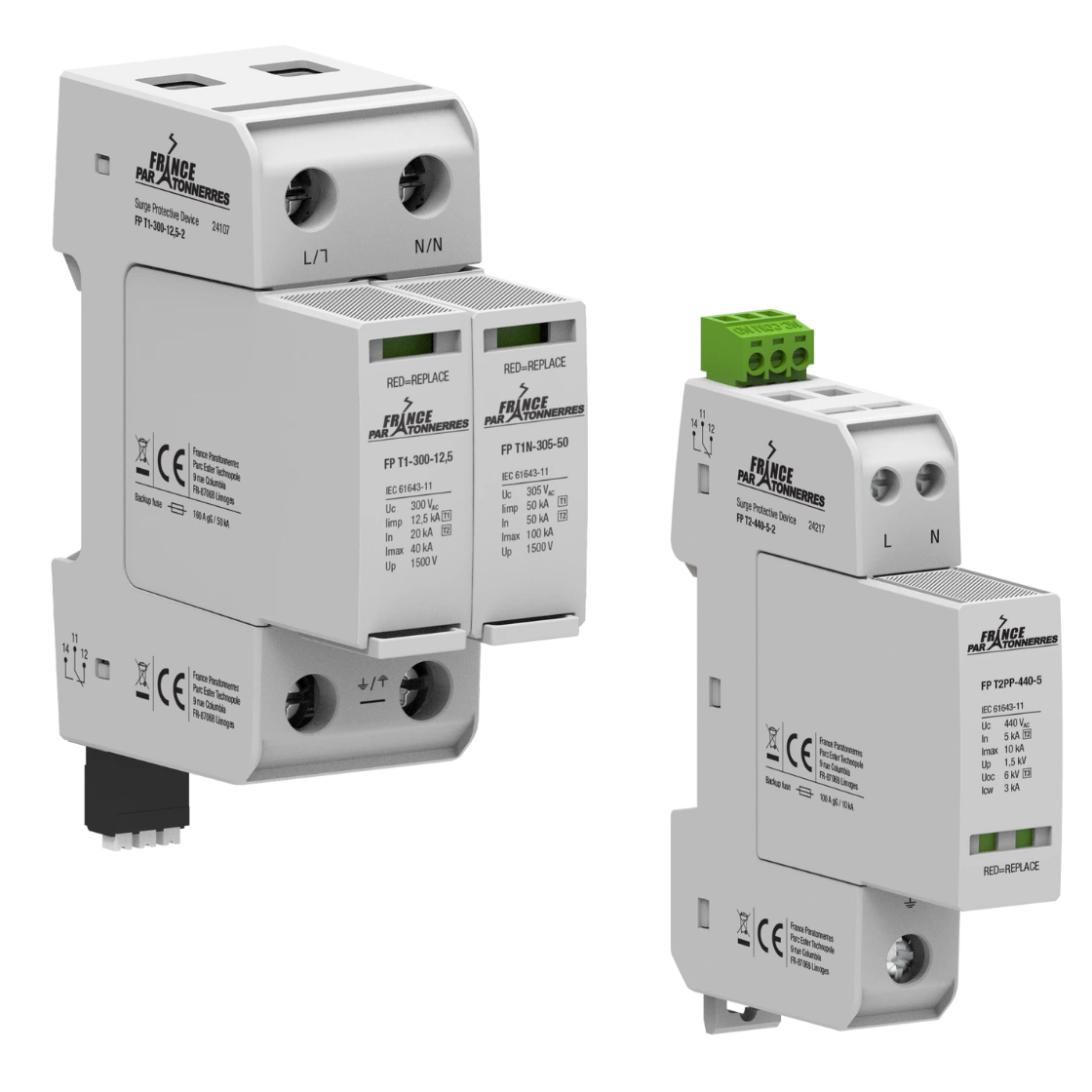
A surge arrester (or SPD, for Surge Protection Device) is an indoor protective device (or indirect protection) designed to protect a building against lightning-related power surges. Indeed, lightning surges represent a major risk, since indirect impacts are a second source of storm-related hazards. Indirect impacts refer to lightning strikes occurring at a distance from a building.
For example, when lightning strikes a tree close to a house, the lightning current can travel from the earth back to the house via power lines or buried pipes. In another example, an impacted power line can lead to power surges in the various buildings it supplies.
A surge arrester is therefore required to protect against these surges. Generally installed in the building’s main switchboard, it detects, absorbs and evacuates transient overvoltages. This is variable-impedance equipment, meaning that under normal conditions, the impedance is high and all electrical current flows through the useful network. The path linking the surge arrester to earth is blocked (known in electricity as an open circuit). But when an overvoltage occurs, the arrester detects it and reacts immediately by offering a path of lower resistance (very low impedance). It then acts as a short-circuit (in electricity, this is known as a closed circuit) and evacuates the overvoltage to earth, where the current dissipates, sparing the electrical equipment on the building’s internal network.
Risks minimized by a lightning arrester
By installing a surge arrester, the following risks are greatly reduced:
- Step voltage: serious injuries (potentially fatal) can be caused by lightning current surges.
- Fire: power surges can cause fires in the switchboard or connected equipment.
- Safety equipment: lightning surges can damage safety system equipment.
- Material damage: all electronic equipment and household appliances are vulnerable to power surges.
Lightning Rod & Surge Arrester: Complementary technologies
Now you know the difference between a lightning rod and a surge arrester, and how to use each technology. Although distinct, these two safety devices are complementary. Firstly, because, as you will have realized, the risks covered are different. By equipping yourself with both devices, you maximize your protection against the effects of direct and indirect impacts.
If there is one thing you need to remember, it is that a building equipped with a lightning rod must also have a lightning arrester.
C’est d’ailleurs une obligation en France et dans de nombreux pays. Et c’est logique, lorsqu’un paratonnerre capte la foudre et dissipe son courant dans le système de prise de terre, d’importantes surtensions peuvent “remonter” dans le système électrique du bâtiment. L’installation d’un parafoudre permet de bloquer cette remontée du courant de foudre.
In fact, it is mandatory in France and many other countries. And it is logical: when a lightning rod picks up lightning and dissipates its current into the earthing system, significant surges can “back up” into the building’s electrical system. Installing a surge arrester blocks this backward flow of lightning current.
Conversely, it is not mandatory to have a lightning rod when you have a surge arrester, so everyone should at least be equipped with SPD(s).
No lightning protection system
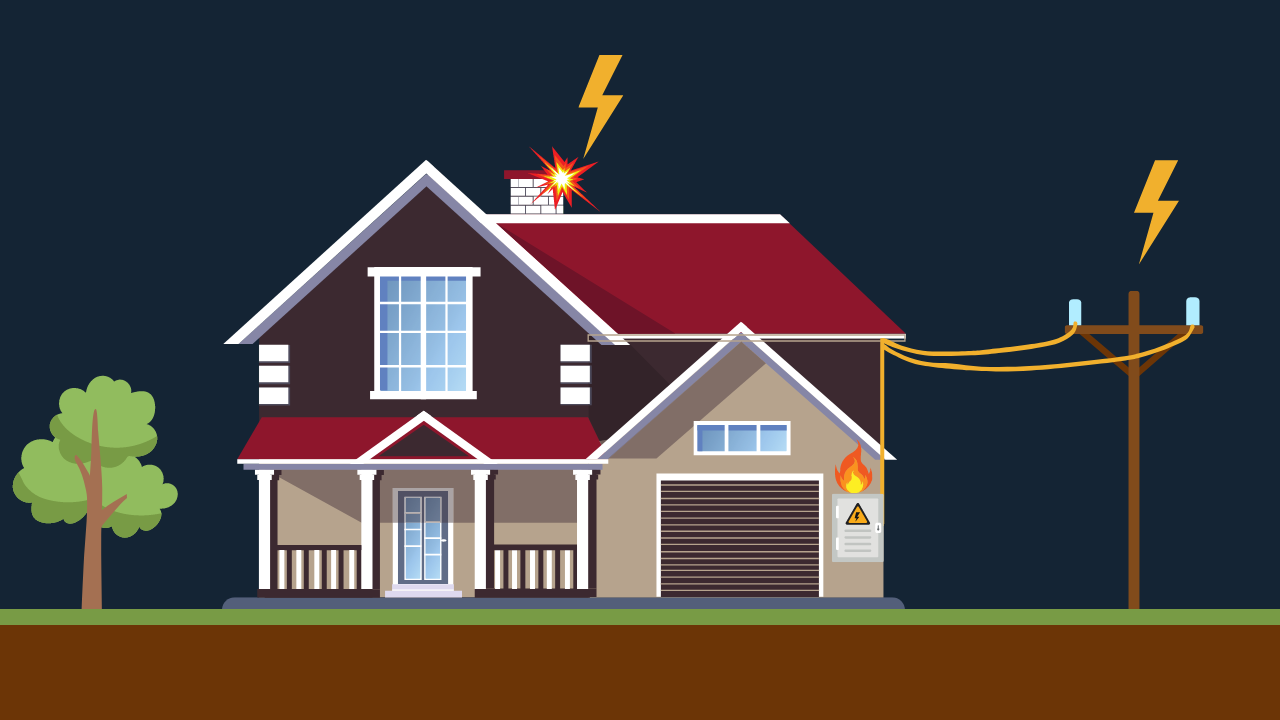
With lightning protection system
